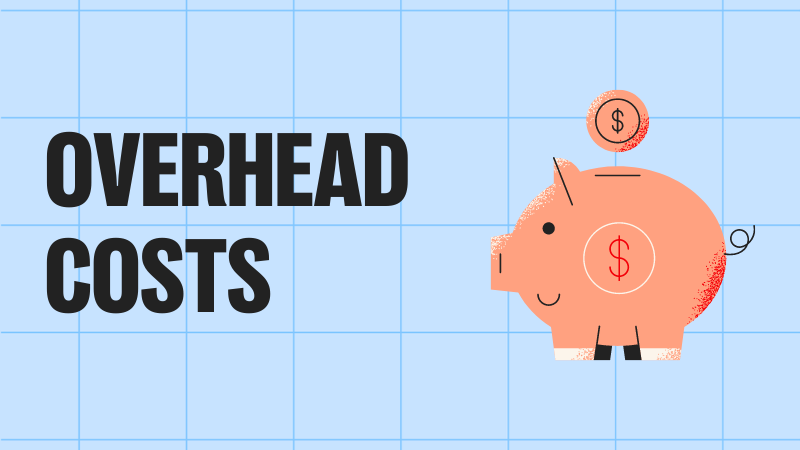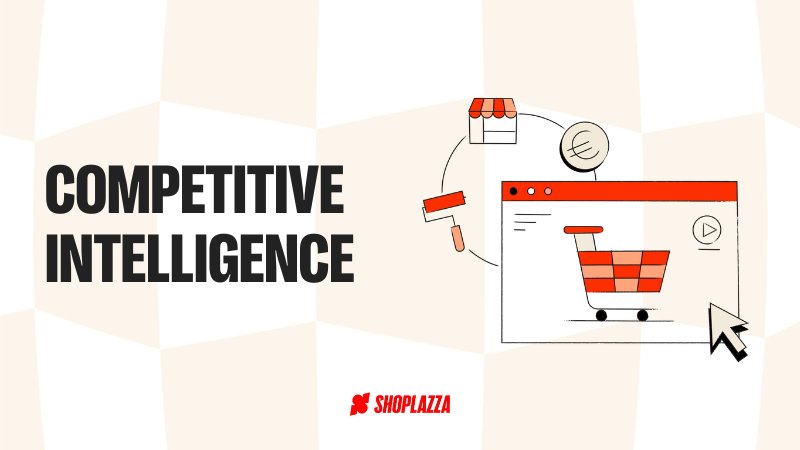
Overhead costs are a significant component of e-business finance. They represent the ongoing expenses necessary for a business to operate smoothly, apart from direct costs directly tied to production or service delivery.
In this special guide, we’ll provide practical examples and strategies for calculating and managing these expenses so you can optimize your overhead costs, enhancing your business’ profitability and operations to save money in the long run. 💸
Start your online business with Shoplazza!
What is an overhead cost?
Overhead costs encompass various expenses a business need to maintain its daily operations. These costs are fixed, meaning that an overhead expense is related to operating costs. These costs are not directly tied to the production of goods or services but are essential for the overall functioning of the company.
Some of the costs may be classified as overhead rent for facilities, the software to run your ecommerce store, accounting fees, and others related to the daily basis management of a business. It’s different from direct cost, which is directly related to the production of goods or services.
For example, if you need to produce more of a product this month, your direct expenses will be higher because you needed to hire indirect labor or buy direct materials, but your overhead costs will be the same.
While overhead costs can vary across industries and business models, there are some common types of overhead costs.
Fixed overhead costs
Fixed overhead costs are ongoing expenses that remain relatively stable over a specific period, regardless of the level of production or sales. Examples of fixed overhead costs include rent or lease payments for office space, insurance premiums, property taxes and administrative salaries. These costs are necessary for the infrastructure and continuous operation of the business.
Indirect costs
An indirect cost refers to a broader category of expenses that are not directly related to a specific product or service. Indirect expenses may include administrative expenses, utility costs, accounting fees, legal expenses and office supplies. While they contribute to the overall functioning of the business, these costs may vary based on factors such as production levels or sales volumes.
Calculating overhead expenses
In order to make your businesses survive in the long term you need to start to calculate overhead costs to understand the true cost of doing business.
We prepared a list with a few steps to help you start establishing what your priority is while you organize your business expenses. The following steps outline a practical approach to calculating overhead costs. Pay attention to them, they are crucial to your success.
1. Identify and compile all overhead expenses: The first step must be to begin creating a comprehensive list of all the overhead expenses your business incurs, including both fixed overhead costs and indirect costs. This list should cover items such as rent, utilities, insurance, administrative salaries, accounting fees, legal expenses, and any other relevant expenses.
2. Categorize expenses as fixed or indirect: Review each expense and categorize it as either fixed overhead costs or indirect expenses. This step helps distinguish between expenses that remain relatively stable and those that may vary based on production or sales volumes.
3. Calculate the total of your overhead cost: Add up all the overhead expenses to determine the total overhead cost for a specific period, such as a month, quarter, or year. This figure represents the combined impact of fixed and indirect expenses on your business operations.
4. Calculate overhead rate: To allocate overhead costs to individual products or services, you must determine an overhead rate. The overhead rate is typically calculated by dividing the total overhead costs by a relevant measure, such as labor hours or production units. For example, if your total overhead costs are $50,000 for a year, and you estimate 10,000 direct labor hours, the overhead rate would be $50,000 divided by 10,000, resulting in $5 per direct labor hour.
5. Allocate overhead costs: Once you have calculated the overhead rate, you can allocate it to individual products or services. Multiply the overhead rate by the direct labor hours or units required for each product or service to obtain the allocated overhead cost. This step helps ensure that the overhead costs are proportionately distributed across your offerings.
Keep an eye on your business finances with the help of these guides ⏰
- Marketing Budget: How to Invest Your Money in Marketing Strategy
- What is ROI? Return on Investment Explained to You
- Conversion Rate Optimization: How to Turn Website Visitors into Customers
- Competitive Intelligence: Definition, Best Tools and How To Build a Strategy
- Break Even Analysis: A Guide for Your Small Business
Strategies to optimize overhead costs
As we said, reducing and optimizing overhead costs have a substantial impact on financial health and long-term success, so every person involved in your business’ finances must pay attention to ways to streamline all the processes that involve costs.
As a business owner, one of your jobs is to constantly check your finances to find ways to decrease your overhead costs. The industry is filled with tricks to help you find the balance between great quality and cheap costs. Here are some strategies to consider:
- Evaluate and consolidate vendor services: Review the various professional services your business relies on and explore opportunities to consolidate or negotiate better terms. Consolidating services, such as IT support or office supplies, with a single vendor can often result in volume discounts and more favorable pricing.
- Embrace technology: Identify areas where technology can streamline processes and reduce overhead costs. Automation software, cloud-based solutions and digital tools can facilitate the management of administrative overheads, improve operational efficiency and reduce the need for manual intervention.
- Renegotiate lease agreements: If you lease office or retail space, consider renegotiating the terms of your lease when it comes up for renewal. By seeking competitive market rates or exploring alternative locations, you can secure more favorable terms and reduce rental expenses.
- Analyze and optimize utility usage: Conduct an energy audit to identify areas where you can reduce utility costs. Simple measures such as upgrading to energy-efficient appliances, implementing lighting controls or adjusting temperature settings can result in significant savings over time.
- Review and optimize labor costs: Labor costs, including direct labor and administrative salaries, often constitute a substantial portion of overhead expenses. Analyze staffing needs, evaluate productivity and identify opportunities to keep operations levels without compromising quality. You must consider training employees as a tool to maximize their skill sets and minimize the need for additional labor.
- Streamline supply chain and inventory management: Optimize your supply chain and logistics to establish strong relationships with reliable suppliers. Efficient inventory management systems can minimize stockouts and reduce excess inventory carrying costs.
- Monitor and review overhead expenses regularly: As we said before, as an entrepreneur, this is a constant part of your job. While continuously monitoring and reviewing your overhead expenses, you have the opportunity to identify areas for improvement on your income statement and analyze the impact of overhead costs on your profitability. I’m sure you have a lot of cost-saving opportunities waiting for you!
If after reviewing all these options, you still think that your overhead cost is too much, maybe you should consider starting a dropshipping business.
Overhead costs: conclusion

Managing overhead costs is essential for the financial health and success of any business. By understanding the different types such as fixed overhead costs and indirect costs, and allocating these expenses accurately, businesses can make informed decisions, streamline operations, and save money in the long run.
Your mission is to implement these strategies to optimize overhead costs, such as consolidating partner service-based business, embracing technology, renegotiating lease agreements and monitoring labor costs.Remember, consistently reviewing and optimizing overhead costs is an ongoing process that requires vigilance and adaptability to changing business needs. We’re sure after this reading, you’ll start to spend money and operating expenses in a more accurate way. 😉
FAQ: Overhead Costs
1. What are overhead costs?
Overhead costs refer to the ongoing expenses that a business incurs to operate smoothly, excluding direct costs directly tied to production or service delivery. These costs are necessary for the day-to-day functioning of the business and include items such as rent, utilities, insurance premiums, administrative overhead, accounting fees, and office equipment.
2. What are fixed overhead costs?
Fixed overhead costs are expenses that remain relatively stable over a specific period, irrespective of the level of production or sales. These costs are necessary for maintaining the infrastructure and continuous operation of the business. Examples of fixed overhead costs include rent or lease payments for facilities, insurance premiums, property taxes, and administrative costs.
3. What are some examples of overhead costs?
Examples of overhead costs include rent or lease payments for facilities, utility costs, insurance premiums, property taxes, salaries, accounting fees, legal expenses, office supplies, and advertising expenses. These costs represent the ongoing expenses necessary for the operation of the business.




